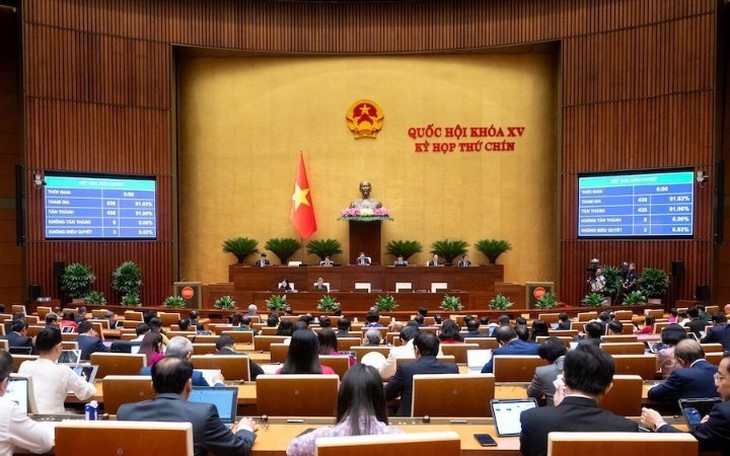
The National Assembly passed the revised Law on Science, Technology, and Innovation at the 9th session of the 15th National Assembly on June 27 with 435 out of 438 deputies voting in favour (accounting for 91% of the total number of deputies).
The law consists of seven chapters and 73 articles, stipulating the activities of science, technology, and innovation by agencies, organisations, and individuals; as well as policies and measures to ensure the development of science and technology and the promotion of innovation.
The law institutionalises Resolution No. 57-NQ/TW and Resolution No. 68-NQ/TW; inherits core contents from Resolution No. 193/2025/QH15 (from Article 3 to Article 9); while introducing more open, dynamic, and breakthrough provisions. It ensures consistency and synchronisation of the legal system and with other laws and draft laws submitted to the National Assembly for consideration and approval during this 9th session.
Fundamental shift in management thinking, accept risks and risk management
In terms of principles, the law requires ensuring the right to freedom of research and creation; it emphasises compliance with professional ethics, professional requirements, honesty, objectivity, and a strong sense of responsibility in science, technology, and innovation activities.
The state manages scientific, technological and innovative activities mainly based on the principle of post-check, focusing on evaluating implementation results rather than intervening in implementation methods and processes; ensure the autonomy and accountability of organisations, enterprises and individuals.
The law establishes the principle of accepting risks in science, technology, and innovation activities, combined with appropriate risk management measures. It assigns the government to define the criteria for acceptable risks, and the procedures of evaluation compliance with process and regulations. At the same time, it establishes a legal framework for controlled pilot mechanisms, aiming to both encourage creation and safeguard public interests.
Regarding special mechanisms for technology decoding and the purchase of technological know-how, in institutionalising Resolution No. 57-NQ/TW, the law stipulates that organisations undertaking science, technology, and innovation tasks are allowed to apply special mechanisms for appointing and paying for experts and directly purchasing technologies or products at negotiated prices to decode technologies for the development of strategic technologies and purchasing technological know-how.
Mastering strategic technologies
The law stipulates that the state shall implement policies to support, invest in, cooperate with, and assign tasks to enterprises for the development of strategic technologies as specified in Article 36, including: investing in infrastructure and specialised support services in industrial parks and hi-tech zones to attract enterprises to establish shared experimental and research facilities; investing in facilities and equipment for shared experimental and research units to attract enterprises to jointly operate and exploit them.
The law supplements regulations on “Chief Engineer” in science, technology, and innovation in the Article 53. Accordingly, the "Chief Engineer" is defined as an individual of high reputation and outstanding competence, entrusted with comprehensive coordination of strategic and large-scale science, technology, and innovation programmes and tasks. Special mechanisms will be applied to remuneration and authority over resources, create conditions to maximise their role of professional leadership in programmes and tasks.
Promoting innovation in enterprises
Regarding financial mechanisms, asset management, and the management of research results in science, technology, and innovation activities, the law is supplemented a strong shift from “expenditure management” to “results-based management.” Accordingly, key features include: spending allocation based on final results, increasing flexibility and autonomy; transferring ownership of assets and research results to host organisations immediately upon establishment, without budget reimbursement or an increase in state capital; flexible commercialisation of research results, with profits reinvested or used to encourage innovation; allocation based on output effectiveness; establishing a synchronised financial fund system that accepts controlled risks and provides flexible support for science, technology, and innovation activities.
Notably, the law dedicates an entire chapter to regulating policies aimed at promoting research, development, and innovation activities in enterprises and the economy. Accordingly, the state develops a comprehensive innovation system with enterprises at its core, ensuring effective linkage between businesses, educational institutions, research centres, intermediary organisations, state agencies, and the community.
Enterprises are empowered and strongly encouraged to invest in research and development, not only with their own resources but also from the state budget through financial incentive policies.
This law will take effect from October 1, 2025, except for the provisions stipulated in Clause 2 of this Article.
Articles 15, 61, 62, 63, 64, 65, and 66 take effect from July 1, 2025./.


